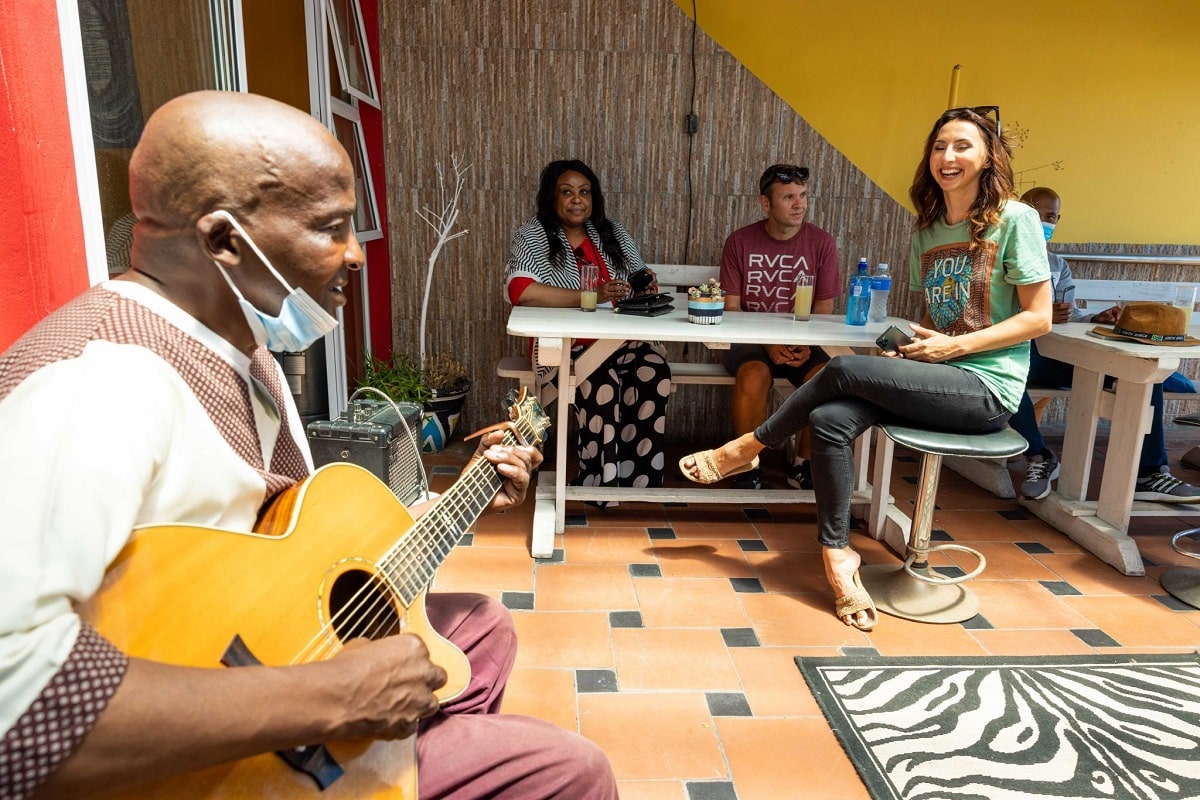The Arts, Culture and Thriving Economy of Langa
5 July 2022
The oldest township in Cape Town, Langa is fast becoming one of the city’s most vibrant and inspiring cultural hubs, celebrating South African creativity and empowers local talent.
Culture Club
A driving force behind the growth and development of arts and culture here is the Langa Cultural Precinct, established in 1999 to foster creativity and is home to several important projects, for both locals and tourists alike.
The Guga S’Thebe Arts and Culture Centre is one of these vital spaces. Housed in a brightly coloured building boasting gorgeous murals, the centre was created to empower Langa
locals through fighting unemployment. By providing people with services like accounting, secretarial services, internet and other basic facilities, the centre aims to assist budding
entrepreneurs to start and maintain their own business – ultimately allowing them to improve their own lives and those of their families. Arts and culture are the focus, and the
centre provides skills training across a wide variety of craft – from pottery to metal work, dance to poetry and music to drama.
The centre also facilitates performance and has various programs to nurture talent, like the theatre, workshops and studios as well as an exhibition area and a retail facility where
artists can display and sell their art to enthusiastic tourists and day visitors. As an additional attraction, the centre can be hired out as a venue but also supplies meeting rooms and conference areas for the public to use for a totally unique workshop or business gathering.
Museum Musing
Part of growing the future of culture is protecting the past and that’s exactly what the Langa Pass Office – now a provincial heritage site called the Langa Heritage museum – does. Once
used to distribute ‘passes’ during apartheid, the site now serves as a stark reminder of the struggle and an icon for the indominable spirit of Langa locals. Inside, you can look at
photographs and documents that show the experience of residents during this time.
Art Beat
16 on Lerotholi is an enlightening and inspiring exhibition space that is committed to supporting African art, artists and their original stories. Situated in the Cultural Precinct, it
creates a platform that encourages collaboration, displays and connections as well as an access point to local and international visitors. Each year, 16 on Lerotholi hosts several
celebrated African artists whose residency attracts new talent and interest from the world.
The first resident artist was Mongezi Gum, whose paintings portray traditional and contemporary township values.
Local Flavour
Taking in Langa and its incredible diversity of art and culture is bound to work up an appetite and the area’s culinary offerings are as satisfying as its performance and visual arts.
Take to the streets and share a measure of Umqombothi – a traditional beer that is sweet and sour and packs a punch or munch on walkie talkies – deep fried chicken heads and feet
served with pap and sauce.
If you want to rest your feet and are after a restaurant experience, pop into Eziko – part restaurant, part community upliftment program, that is designed to deliver an authentic Langa eating experience
The Eziko Cooking and Catering School is an off shoot of the restaurant and was created to provide unskilled residents with training and work experience in the hospitality industry. But
it’s not just locals who benefit from the school – Eziko will also give fun and informative cooking lessons to private parties and businesses. Learn to cook delicious township staples like samp and beans, salted sheep head and spiced tripe around the braai.
Dance Some More
Much of the initiatives in Langa preserve the past and empower the adults, but it’s the youth that need to be protected and nurtured to ensure the future of the area’s rich cultural
identity. Happy Feet Youth Project was founded in 2007 by a Langa tourist guide and local, Siviwe Mbinda.
Using confidence and discipline as key elements of the program, Happy Feet pairs traditional dance and gumboots to teach children to reach their goals in performance
and throughout their lives. Teaching children to balance homelife, schoolwork and dancing gives kids structure and boundaries and the dancing itself encourages them to celebrate
their culture as well as to express themselves positively.
Happy Feet aims to use performances and events to create awareness of the program and to create new opportunities for the children and their trainers. With over 100 boys and girls aged 3 to 22, the group has performed at traditional ceremonies hotels, dance competitions and even in parliament.
